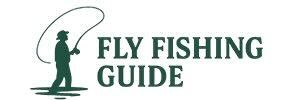Streamside Lessons: A Half-Day Walk & Wade Trout Trip in Cherokee
Starting at $250 | Up to 3 Anglers | 4 Hour Trip
By midmorning the river has already found its voice: a steady, glassy hum undercut by rocks and small riffles. You step from the bank into thigh-high water and the current greets your legs like a curious animal, nudging you downstream. Upstream, moss-slick boulders channel the flow into seams and eddies where trout loaf in cool shadows. This is western North Carolina in miniature—small rivers that feel private, the kind of water that rewards attention more than power. On a Half Day Local: Walk & Wade trip, those seams are the playground.
Trail Wisdom
Wear polarized sunglasses
Polarizers cut glare and reveal subsurface structure—crucial for spotting fish and reading currents.
Layer for variable mountain weather
Start with a breathable base and carry a lightweight rain shell—temperatures can shift quickly along shaded streams.
Practice safe wading
Use a wading staff or partner up in tricky currents; step deliberately on river rocks to avoid slips.
Buy a North Carolina fishing license in advance
Licenses can be purchased online or at local shops—guides can point you to the nearest vendor.
Local Knowledge
Hidden Gems
- •Raven’s Fork Catch & Release pools for sight fishing
- •Fires Creek backcountry runs for solitude and native brook trout sightings
Wildlife
Belted kingfisher, North American river otter
Conservation Note
Guides emphasize catch-and-release, streamside stewardship, and invasive species prevention—boots and gear should be cleaned between waters.
These waters run through the ancestral homelands of the Cherokee Nation; rivers have long supported both cultural life and subsistence fishing.
Seasonal Guide
spring
Best for: Active trout, Learning to read flows
Challenges: Higher water levels, Cool mornings
Spring often brings higher flows from snowmelt and rain—fish are active but currents can be stronger, so expect more walk-and-wade instruction on safety.
summer
Best for: Smallmouth bass, Warmer water wading
Challenges: Low water in drought years, Bugs in warm stretches
Summer offers smallmouth bass action in warmer runs; mornings and evenings are best to beat heat and bugs.
fall
Best for: Stable, clear water, Scenic foliage
Challenges: Cooler mornings, Shorter daylight
Fall provides crisp days, clear water, and great light—prime conditions for sight fishing and photography.
winter
Best for: Solitude, Spotting resident trout
Challenges: Cold water and air temperatures, Layering and safe wading are critical
Winter offers quiet streams and opportunistic trout, but bring warm layers and be cautious of hypothermia risk.
Photographer's Notes
What to Bring
Polarized SunglassesEssential
Reduce glare and help you spot fish and underwater structure.
Breathable Waders (provided but bring personal fit if you prefer)
Staying dry and comfortable extends productive time on the water; guides provide waders if needed.
Light Rain ShellEssential
Quick protection from sudden showers and wind along shaded streams.
Wading Boots with Felt or Studded SolesEssential
Secure footing on wet, algae-slick rocks increases safety and confidence while wading.
Common Questions
Is prior experience required to join a half-day trip?
No—trips are for all levels; guides provide casting instruction and basic wading coaching as needed.
Are rods and gear provided?
Yes—fly rods, reels, terminal tackle, breathable waders and boots are included in the trip price.
Do I need a fishing license?
Yes—North Carolina fishing licenses are required and can be purchased online or at local shops; guides can advise where to buy one.
What species will we target?
Expect rainbow, brown, and brook trout year-round and smallmouth bass during the summer months.
Is catch-and-release mandatory?
Most guided waters are catch-and-release to protect fish populations; your guide will explain local rules and best practices.
Are trips private or shared?
All trips are privately booked—your group will not be joined with others.
What to Pack
Polarized sunglasses, layered rain shell, warm base layer, water & snacks — for visibility, weather protection, warmth, and energy on the water
Did You Know
North Carolina supports over 2,700 miles of wild trout streams—one of the largest networks of wild trout waters in the eastern United States.
Quick Travel Tips
Buy your NC fishing license before the trip; meet your guide in Cherokee; expect spotty cell service near narrow valleys; tip 15–25% if you enjoyed the guide’s instruction
Local Flavor
After a morning on the river, head into Cherokee or a short drive to Bryson City for Appalachian fare and craft beer—seek locally sourced trout or a hearty skillet at a nearby diner, then sample a pint at Nantahala Brewing Company in Bryson City.
Logistics Snapshot
Closest major airport: Asheville Regional Airport (AVL) ~1.5–2 hours drive; Typical drive from Cherokee to fishing access: 5–30 minutes; Cell service: spotty in narrow valleys; Permits: NC fishing license required
Sustainability Note
These streams rely on cold, clean mountain water—practice catch-and-release, pack out what you pack in, clean gear between waters to prevent invasive species, and avoid wading in spawning areas.
Continue Reading

Streamside Lessons: A Half-Day Walk & Wade Trout Trip in Cherokee
Learn to read pocket water, cast with purpose, and feel the pull of wild trout on a private, four-hour guided outing in western North Carolina. This half-day walk-and-wade trip is ideal for beginners and seasoned anglers who want concentrated time on some of the region’s best small rivers.
Cherokee, North Carolina

Reading Water in Umbria’s Valnerina: A Guided Day on the Nera and Corno
Follow a local guide into the clear, quick waters of Umbria’s Valnerina, where the Nera and Corno rivers carve a limestone corridor through Italy’s green heart. This is fly fishing with history and flavor—native browns, old railway tunnels, and lunches that belong in a postcard.
Spoleto, Umbria
